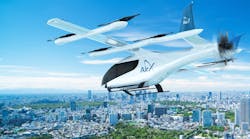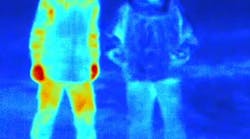By Ben Ames
Astronauts on the International Space Station face many mortal dangers. Over a six-month stay in low-earth orbit, they endure muscle atrophy, cramped conditions, and a risky ride home. On top of all that, an invisible hazard may have the longest lasting effects — radiation exposure.
So researchers at NASA are pushing software to its limits to find ways to block radiation. Their challenge is handling huge file sizes and juggling multiple software programs. But instead of choosing the most powerful software tools, they have chosen the easiest to use, saying it saves them crucial time.
"Sometimes the best way to solve a high-tech problem is low-tech," says Neal Zapp, a researcher in the Space Radiation Analysis Group at NASA's Johnson Space Center, in Houston, Texas.
This is not garden-variety radiation. "A lot of things around you at ground level are radioactive at a low level, but the radiation environment in space is very different," he says. "As opposed to the usual X-rays or gamma rays, in space you see ions as heavy as gold, with energy fluxes to the GeV (billion electron volts) level."
There are two particularly hazardous parts of space radiation.
The universe is full of natural radiation called the galactic cosmic background (GCR). The earth's magnetic field usually shields the planet, but it is a double-edge sword, since it can also act as a sink to trap radiation inside. As it orbits the Earth every 95 minutes, the million-pound space station whizzes through this trapped, low-energy radiation.
The second threat is sudden storms from the sun. Every now and then, the sun belches out a coronal mass ejection (CME), forcing as much as 10(24) kg of nuclear particles into space, some with energy levels up to 2 GeV. Faced with such an event, the crew would hide in radiation storm shelters, huddling in parts of the ship that are better shielded than others. Today, those parts are usually shielded with a lightweight polymer plastic called Polyethylene.
To deflect both types of radiation, Zapp's team builds detailed computer models of each spacecraft and astronaut, then simulates radioactive particles as they pass through.
They begin with home-grown code that describes how radiation reacts with various materials. Developed at NASA's Langley Research Center, it's called HZETRN (High charge (Z) and Energy TraNsport).
Then the NASA experts apply that to detailed models of people and spacecraft. In the past, engineers modeled those with flat text files and algebraic equations. Today, the explosion in computer processing power has allowed them to use computer-aided design (CAD) models instead. But there is a downside; those models are enormous.
Vehicle models for the international space station are so big that NASA radiation analysts have never put them all together at once, choosing instead to model specific assemblies. "Even those are about 10 gigabyte file sizes, so we need to use some pretty stout hardware," he says.
NASA's human model comprises 2,250 volumes of space, including full skeletal, muscular, and organ systems. In contrast, the model of the space station's lab module — called US Lab 1 — has 50,000 volumes alone. That level of detail describes every lock washer and hex nut on board, Zapp says.
Next, the engineers use ray tracing, a technique borrowed from computer animation that follows an imaginary beam of light through your model and calculates every object it would hit. But NASA researchers do not use single rays; they calculate 5,000 to 10,000 rays emanating from each point, like a miniature star.
Zapp's team builds its models with IDEAS Master Series from EDS PLM Solutions in Plano, Texas, a strong CAD suite with an intuitive interface. But all other engineers at the Johnson Space Center use Pro/Engineer from PTC in Needham, Mass., an extremely powerful but hard to use program, he says.
So the team must translate files between the two languages every day. That is where the job gets hard. "Right now, file translation in the CAD world is terrible, like trying to translate files between Apple and IBM in 1985," he says.
File translation often relies on intermediate standards that preserve the details of CAD models but not their context in the assembly, producing what engineers call "dumb solids." It often takes as long to repair those mistakes as to create the original models.
Tired of such labor-intensive work, Zapp's team sought an inexpensive, easy to use, CAD translation tool. They chose CADporter from Elysium in Southfield, Mich. "We settled on Elysium because it works," he says. "We go from Pro/E to IDEAS and back all day with excellent stability."
CAD modelers in the aerospace industry have two priorities — accuracy and the ability to handle large files, says Peter Heath, Director of Product Management at Elysium.
"An assembly with certain physical properties in system A has to have those same properties in system B," he says. And it can't just be close — the numbers must match exactly for details like surface area, volume, and center of gravity.
Most systems can handle that if you tweak them enough. But that sort of bookkeeping work takes time.
"We believe most people want a translator to disappear, just to operate in the background," Heath says. "If you're going to put 100 people on a project, you want to put as few of them on translation as possible, because you want the rest of them to be designing cool features."


